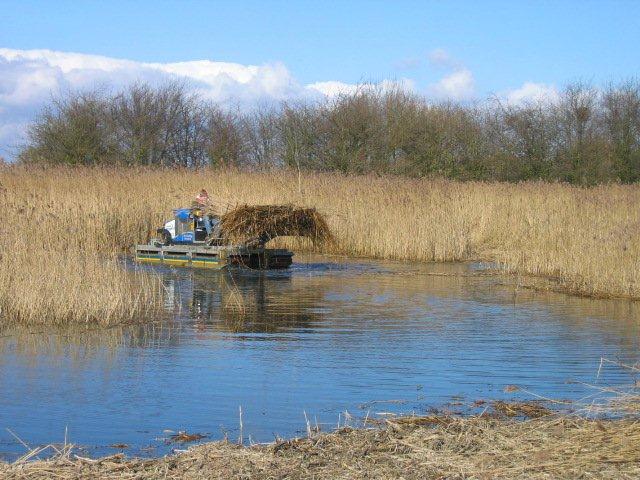 Reed beds are areas dominated by Common reed, (Phragmites australis) a perennial and flood-tolerant grass that grows to over 2 metres high. The reed beds provide an essential habitat for a wide range of plants, animals, insects and invertebrates and their decline over the last 3 centuries has had a devastating impact on this wildlife, particularly water voles, otters, water shrews, bitterns, and harvest mice.
Reed beds are areas dominated by Common reed, (Phragmites australis) a perennial and flood-tolerant grass that grows to over 2 metres high. The reed beds provide an essential habitat for a wide range of plants, animals, insects and invertebrates and their decline over the last 3 centuries has had a devastating impact on this wildlife, particularly water voles, otters, water shrews, bitterns, and harvest mice.
Reed beds were traditionally managed by reed cutters who used the reed for thatching material. This sustainable system provided a rotational harvest of reed while preventing the build-up of dead material and drying out of the habitat. However, the decrease in this activity along with the even more damaging habit of draining wetlands for agricultural use has been a disaster for nature.
Having now been identified as a priority for preservation, 90% of the reed beds that remain are now protected as Sites of Special Scientific Interest (SSSI) and there are a number of initiatives throughout the UK which are focussed on regenerating and maintaining this essential habitat. Some of these are on a huge scale such the RSPB project underway to recreate reed beds at Snape.
In order to maintain the reed beds to offer the optimised support for a variety of wildlife regular cutting of the reeds is essential, as is maintenance of the water levels. Cutting swathes into the reed bed allows water – and therefore fish – to flow close to the dense areas where birds, particularly bitterns prefer to feed.
Well maintained reed beds do not only offer thatching material and refuge for a number of endangered species like the bittern, they are ideal:
• For Birdwatching
• For treating sewage and areas of poor water quality
• For Game shooting
• To act as buffer strips to filter soil and run off from arable fields
• As bankside protection from erosion by wind, water and waves
How Aquatic Solutions UK can help
Having worked on reed beds for the RSPB at Blacktoft Sands and for Allerdale Council at Siddick Ponds we have a wealth of knowledge and experience in the management of this important habitat.
Our Truxor amphibious machines can access even the remotest reaches of a reed bed, to cut, excavate, rake and remove the reeds efficiently with minimum impact on the surrounding area making it ideal for working on nature reserves, SSSIs etc.
For an informal conversation to discuss any reed bed management issue call us on 01788 810614, or complete the form below.
Error: Contact form not found.
